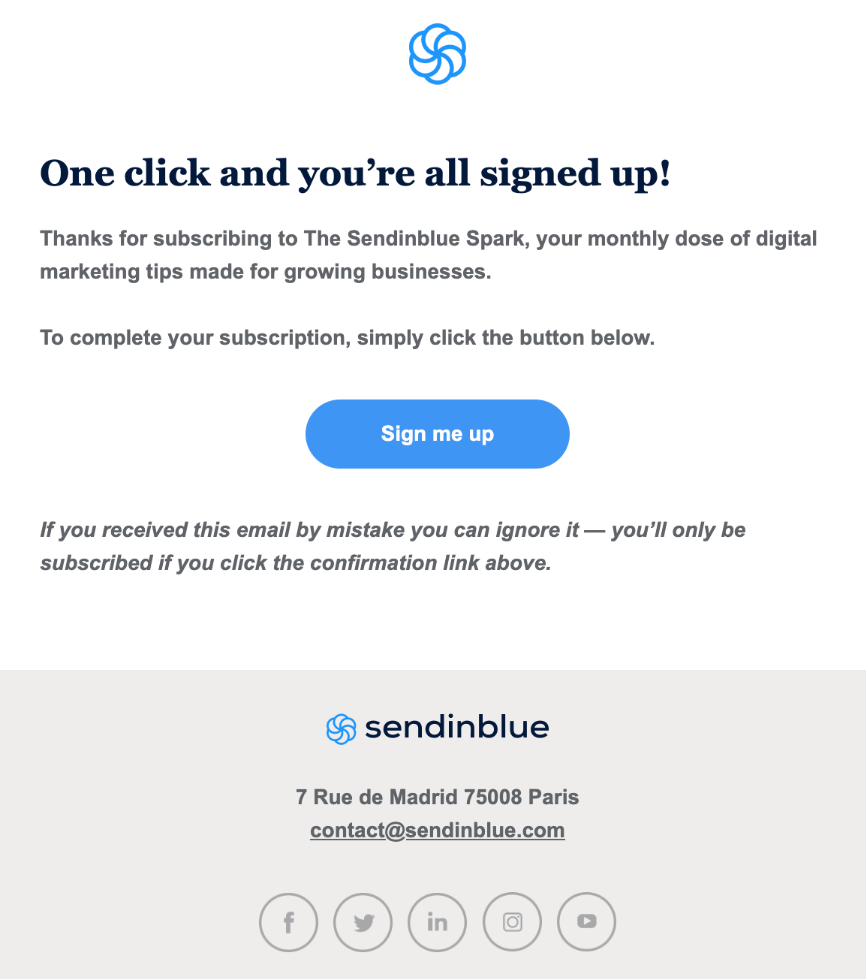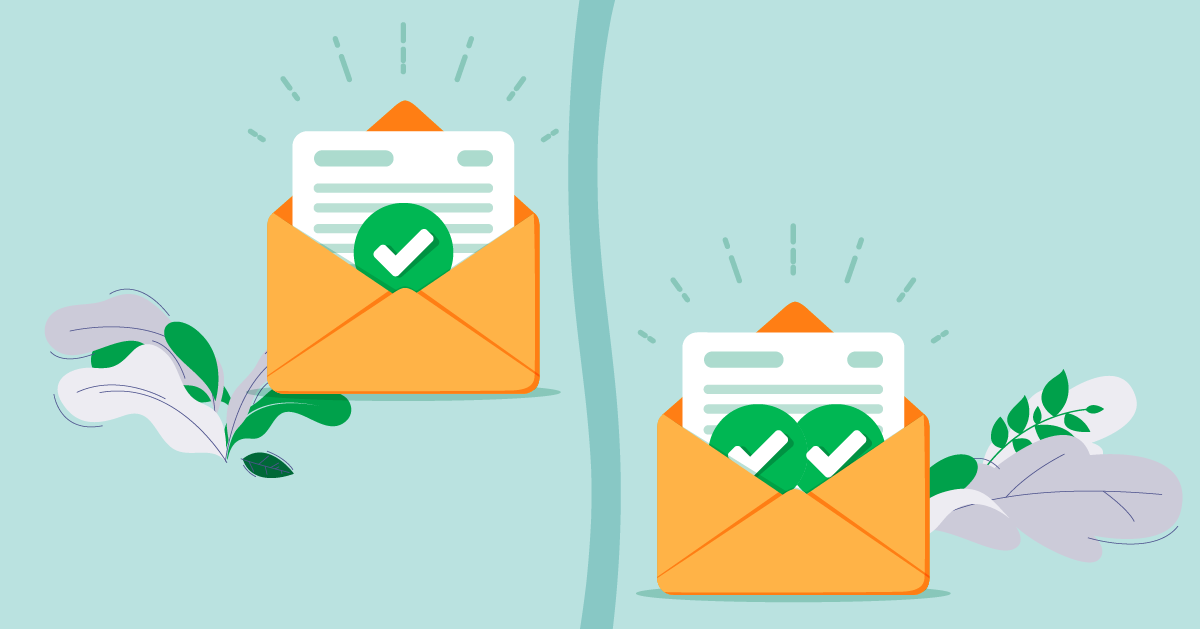When creating an email form, there are two signup choices: single opt-in and double opt-in. This one decision can have a big overall impact on the results of an email campaign.
While that may sound intimidating, keep in mind there is no right or wrong opt-in process. Both are popular methods used everyday for email signups. In fact, in a survey of over 1000 marketers conducted by Litmus, single opt-in was only 7% more favorable over double opt-in.
While they are both effective methods, one opt-in option will be a better fit for your specific email marketing over the other. Whether that is single opt-in or double opt-in depends on the desired outcome of your email efforts.
In this article, we’ll discuss:
- The difference between single opt-in vs double opt-in
- The pros and cons of single opt-in
- The pros and cons of double opt-in
- When each is better for your business
What’s the difference between single opt-in and double opt-in?
- Single opt-in, or SOI, is a one-step process where a new email subscriber only needs to sign up for an email list once without a confirmation before receiving emails.
- Double opt-in, or DOI, is a two-step process where the new subscriber must confirm that they are subscribing. First, an email address is entered into a signup form. A confirmation link is then sent to the email address provided that must be clicked on prior to receiving any other emails.
Simply put, double opt-in requires a confirmation whereas single opt-in does not.
Let’s take a look at an example of each.
Single Opt-In And Double Opt-In Examples
Single Opt-In Example
This pop up email form from Quest Nutrition is a great example of the single opt-in signup process. Once arriving on their homepage, a pop up appears to signup for a newsletter to receive a discount on the next purchase. Once the user enters their email address and presses subscribe, they are automatically signed up without needing to confirm their email.

Double Opt-In Example
This confirmation email from Sendinblue is a perfect example of the two-step email signup process. Once someone submits their email address on their website, this email is sent to their inbox to verify that the email address is valid and that the person wants to be contacted. Once the “sign me up” button is clicked, the email address is confirmed and will be added to the email list.

The Pros And Cons Of Single Opt-In And Double Opt-In
Pros Of Single Opt-In
Single opt-in is simpler. People like when things are simple, and email signups are no exception. Only having one step to complete is more user friendly as new subscribers won’t feel they have to do extra work to get on your email list.
Single opt-in email lists have higher conversion rates. It’s no surprise that the easier something is, the more likely people are to do it. Single opt-in emails have higher conversion rates because they only have one step and don’t require the email address to be verified. With double opt-in lists, the confirmation email will often sit in someone’s inbox and never actually be opened.
Cons Of Single Opt-In
Single opt-in lists are more likely to get fake email addresses. While single opt-in can result in faster email list growth compared to double opt-in, you’re also more likely to get fake email addresses and spam. Plus, there’s the risk of not reaching genuine prospects because of typos made when they filled out the email signup form. When the first emails try to go out to invalid addresses, they will hard bounce. This has a negative impact on your sender reputation and email deliverability rates.
Single opt-in emails have less engagement. The ease of subscribing to a single opt-in email results in some subscribers that aren’t actually interested in your messages. This means lower open rates and click through rates compared to double opt-in emails.
Pros Of Double Opt-In
Double opt-in lists are higher quality. The two-step process takes away the risk of invalid email addresses, spam, and uninterested recipients from ending up on your email list. You can also save money by not having to pay for email cleaning that “scrubs” your list to get rid of the bad emails.
Double opt-in emails have better campaign metrics. You can expect a higher open rate, higher click rate, and a lower unsubscribe rate when you have an audience that has confirmed that they want to be there via the two-step confirmation process of double opt-in.
Cons Of Double Opt-In
Double opt-in emails have a longer sign up process. Even though it is a simple extra step of clicking a link, that is too much for some people who will not follow through and never end up confirming that they want to be on your email list.
Double opt-in email lists have a slower growth rate. The two step process filters out the potential subscribers who never complete the confirmation part. This means a double opt-in email list will grow at a slower rate than a single opt-in.
Should I Use Single Opt-In Or Double Opt-In For My Email List?
Email marketing is the backbone of ecommerce, which is why it’s so important to determine what the ultimate goal is for your email campaign and your business prior to choosing your opt-in process. It ultimately comes down to quality or quantity.
- Single opt-in email lists work well for businesses that are trying to grow their audience the fastest.
- Double opt-in emails work well for businesses that are more focused on engagement. It also is the better choice for businesses that are having trouble with spam signups and are looking for a high quality mailing list.
Once you choose single opt-in or double opt-in for your email marketing, you then have to decide what kind of marketing emails you are going to send out to your subscribers.
